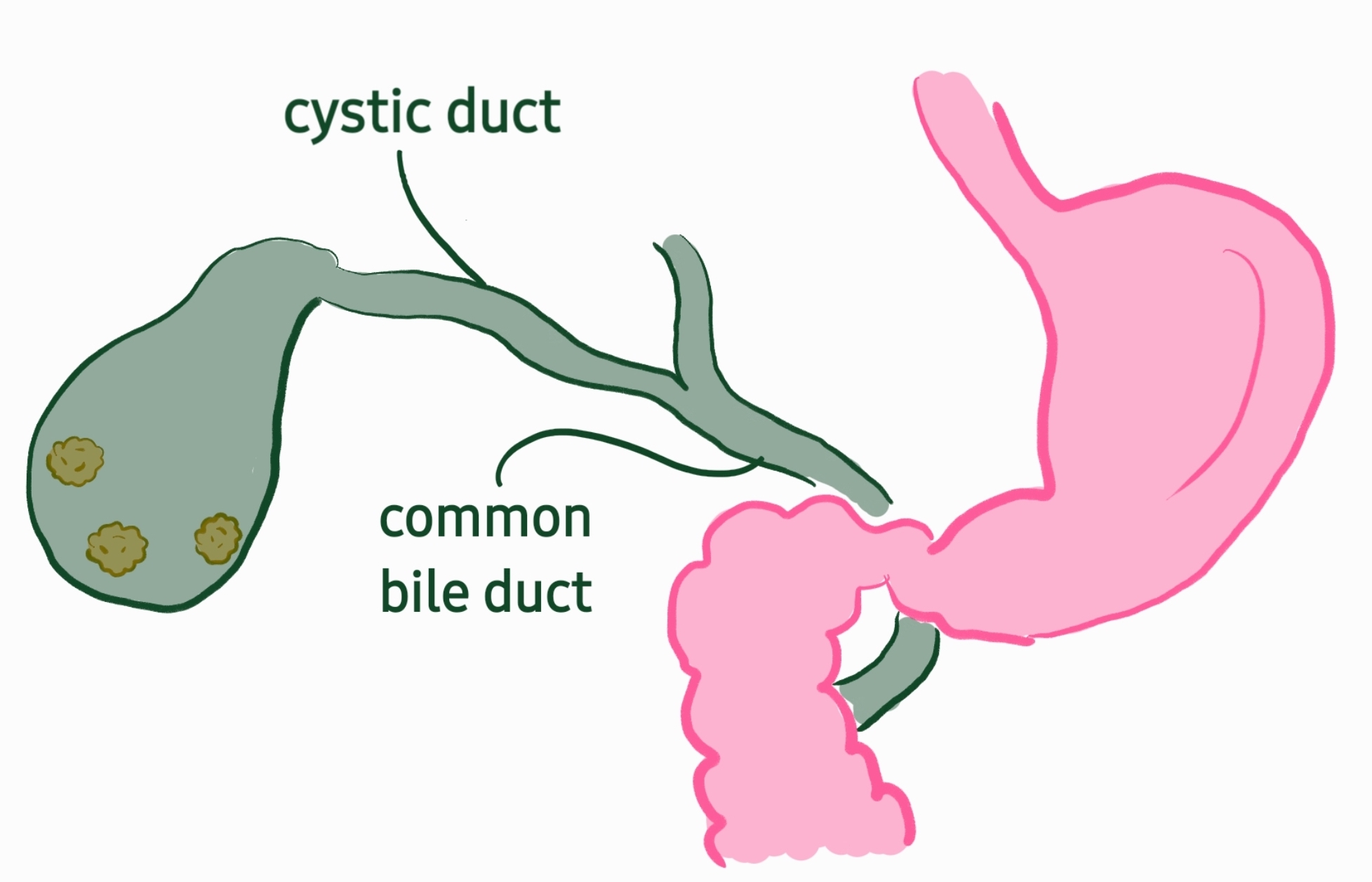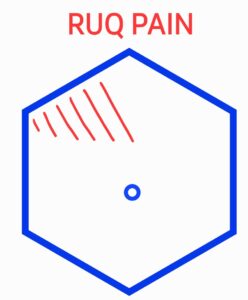Definition
Gallstone is the crystallisation of bile due to imbalanced bile component.
Cholelithiasis: Gallstone within gallbladder causing symptoms
Choledocholithiasis: Gallstone within common bile duct causing symptoms
Etiology- Type 2 Diabetes Mellitus
- Crohn’s Disease
- Liver cirrhosis
- High cholesterol, fatty acid and carbohydrate diet
- Recent rapid weight loss
- High-risk population: 5 F’s: Fat, Fertile, Fair, Female, Forty

 Pain
Pain
- Early epigastric vague pain then progresses to debilitating constant right upper quadrant abdominal pain that can radiate to the right shoulder or to the back in a band-like pattern. This pain can last between 30 minutes to 24 hours and does not improve with movement or meals.
- Signs of Indigestion
- Abdominal bloating
- Nausea
- Intolerance to fatty food
- Acid reflux for several hours after a meal
- Signs of biliary obstruction
- Pruritus
- Intermittent jaundice
- Acholic stools
- Dark urine
- Blood test
- FBE
- LFT & Bilirubin
- Amylase & Lipase levels
- Imaging
- Transabdominal ultrasound
- Endoscopy ultrasound
- Magnetic Resonance Cholangiopancreatography (MRCP)
- Endoscopic Retrograde Cholangiopancreatography (ERCP)
- CT Scan
- Pregnancy test for every fertile female (as some Tx needs to be altered if pregnancy)
- Asymptomatic Pts often do not require Tx unless if one of the following is present:
- Haemolytic anaemia
- Porcelain gallbladder
- Gallstone >3cm in size
- Anticipating bariatric surgery
- Symptomatic Pts requires active management
- Pain management
- Oral dissolution (ursodeoxycholic acid commonly used, most effective for non-calcified cholesterol stones)
- Extracorporeal shock wave lithotripsy
- Cholecystectomy
